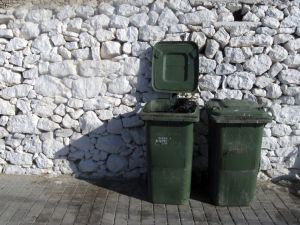
![]()
index.html>Biomedical Waste Incineration Biomedical Waste Incineration Basics
A recent study on a survey of biomedical waste reportedly done by researchers at the regional engineering college at Orrisa indicates that an average daily generation of the biomedical waste in an Indian hospital comes out to be around 1.37 Kg/bed/day. This is a significant amount of waste and can be extremely hazardous to human health if proper disposal measures are not brought into action. The colour coding and the type of container used for the disposal of the biomedical waste has been defined in the Waste Guidance produced by the Regulating Authority. Delivered in yellow bags, the waste treatment is through incinerator/deep burial. The top and bottom of any biomedical waste box must be closed and taped with a two inch wide pressure sensitive tape or equivalent when called for pick-up. This type of waste must be disposed of within 30 days from the first date of generation. Both indoor and or outdoor biomedical waste storage must be coordinated with the biomedical waste contractor and the Biological Safety Office. All biomedical waste storage duration must not exceed 30 days for the biomedical waste pick-up schedules. The Biomedical Waste Program protects health care workers, environmental service staff, waste hauliers, and the general public from risks associated with potentially infectious biomedical wastes. Biomedical Waste generators include hospitals, clinics, nursing homes, laboratories, funeral homes, dentists, veterinarians,
and physicians. Local administrative codes require health care professionals to ensure proper disposal of the biomedical waste that they
generate. Biomedical waste generated by individuals in their own homes from use of syringes or diagnostic lancets also should be properly
packaged and disposed. If further such segregation takes place which lengthens the time between creation of the biomedical waste and treatment thereof. Pathogens in these circumstances have an extended time in which to multiply prior to treatment, thereby increasing the number of pathogens that the treatment process must inactivate. In spite of the fact that the biomedical waste is a great health hazard, the awareness and knowledge regarding biomedical waste handling and disposal is abysmally low, both in public and health care workers. A lot more depends on the attitude of health professionals due to absence of any motivation to look at this issue in a proper perspective. For example, if biomedical waste is mixed with hazardous waste, both the Biomedical Waste Management Rules and the Hazardous Waste Management Rules would apply to the management of the waste. We believe that large cities and surrounding regions need one or a maximum of two facilities to cater to the biomedical waste needs. This means that in many expanding cities an additional facility needs to be provided and this with better regulation will facilitate monitoring and regulation of waste from hospitals to the sites and from the treatment sites safely to landfills. However, very few health institutions are implementing the procedures for safety in handling and disposing of these materials properly because of a lack of awareness and difficulties at the institutional as well as operational level such as lack of resources, including personnel, space and equipment, lack of technical knowledge for scientific waste disposal.
However, very few health institutions are implementing the rules for biomedical waste transport and disposal properly because of a lack of awareness and difficulties at the institutional as well as operational level such as lack of resources, including personnel, space and equipment, lack of technical knowledge for scientific waste disposal. At all times, it is essential to keep safety foremost in your mind and use adequate personal-protective equipment. Unless the steam sterilizer is equipped to continuously monitor and record temperatures during the entire length of each sterilization cycle, the operator of such sterilizer shall affix to the primary container temperature-sensitive tape which indicates when the desired temperature is reached. Biomedical waste shall not be considered decontaminated unless the temperature-sensitive tape indicates that a temperature of at least two hundred fifty degrees Fahrenheit was reached during the sterilization process. Visit the Waste Treatment Technologies web site. for more information. More information is
available at the Wasters Blog Site, Waste as a Resource. |
Biomedical Waste Incineration Waste Incineration Plants Revealed Sewage Sludge Incineration Mechanical Biological Treatment Incineration and Acidity after NaoH Scrubbers Waste Water Treatment Technology for Organic Waste Disclaimer Privacy Statement |
(c) 2008 Waste Technologies Multi-Site

 In one good example the locals decided to take action and they formed an 8-member committee, which was made responsible for
implementing, training and ensuring sustainability of the new programme. The biomedical waste incinerator now planned shall be equipped with
auxiliary burner(s) of adequate heat capacity to be used during start-up, shutdown, upset conditions, when burning marginally combustible
waste, and at any other time as necessary to maintain the minimum incineration temperature. The auxiliary burner(s) shall be designed such
that the minimum combustion zone will opeate at a temperature of 1000 degrees C, and can be maintained at this temperature for at least 15
minutes without any waste feeding to the unit. Your equipment may differ should ensure that you know how to use your equipment. After the
autoclave run has completed, let the waste cool.
In one good example the locals decided to take action and they formed an 8-member committee, which was made responsible for
implementing, training and ensuring sustainability of the new programme. The biomedical waste incinerator now planned shall be equipped with
auxiliary burner(s) of adequate heat capacity to be used during start-up, shutdown, upset conditions, when burning marginally combustible
waste, and at any other time as necessary to maintain the minimum incineration temperature. The auxiliary burner(s) shall be designed such
that the minimum combustion zone will opeate at a temperature of 1000 degrees C, and can be maintained at this temperature for at least 15
minutes without any waste feeding to the unit. Your equipment may differ should ensure that you know how to use your equipment. After the
autoclave run has completed, let the waste cool.